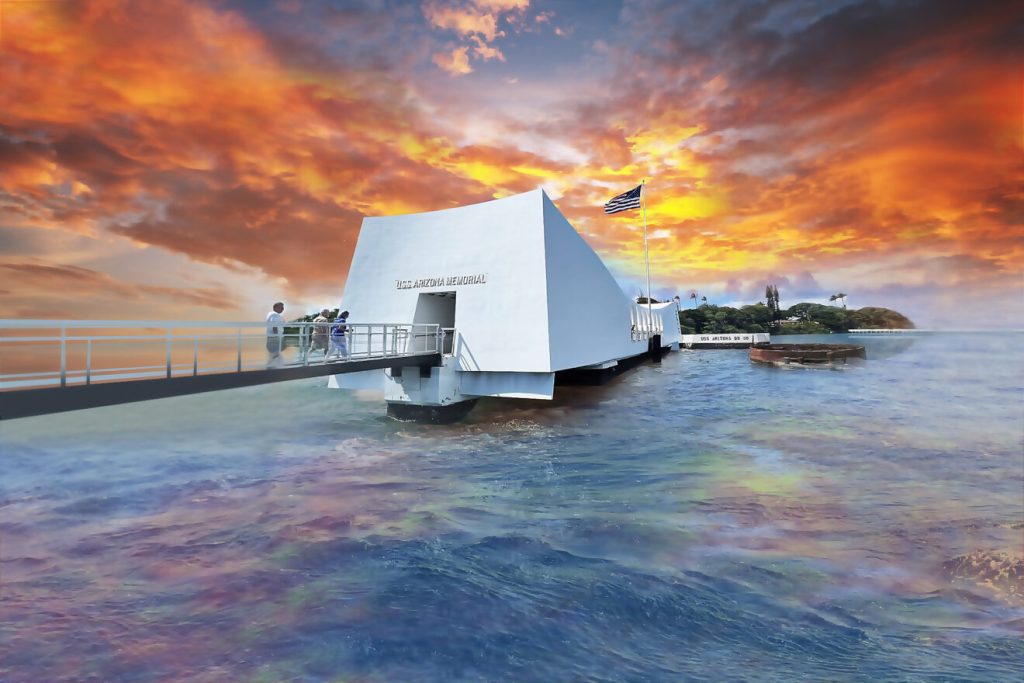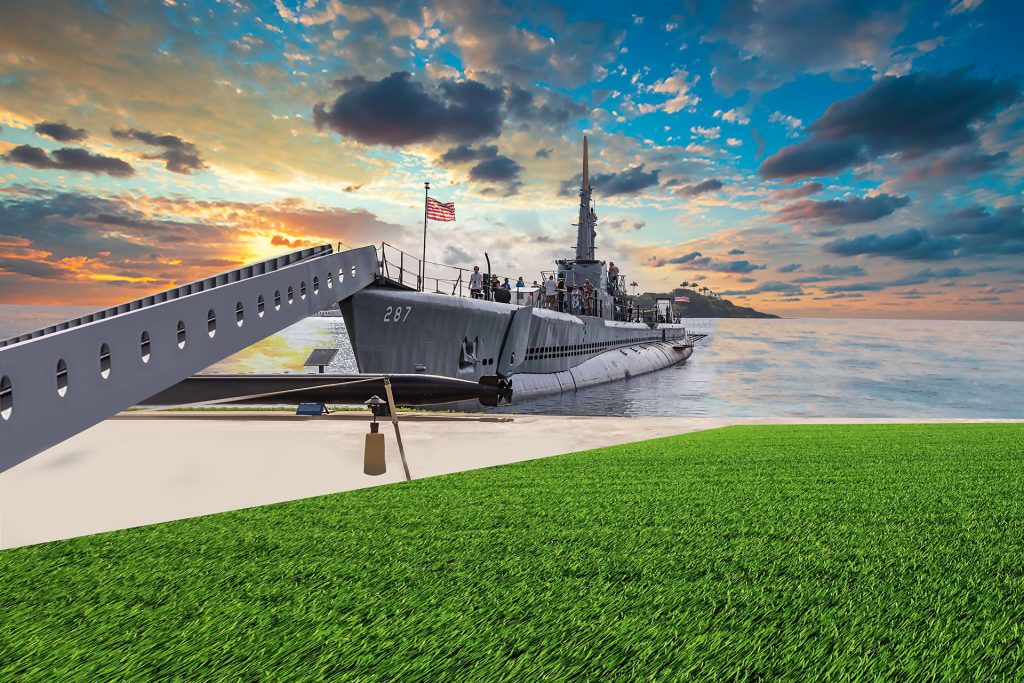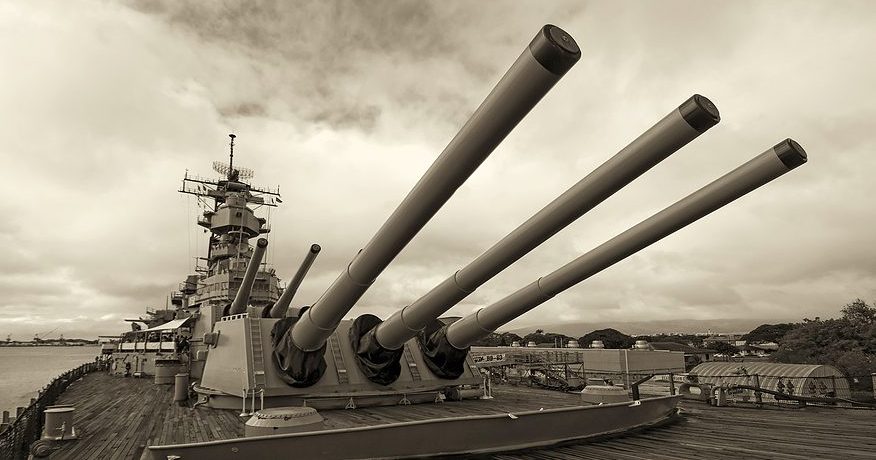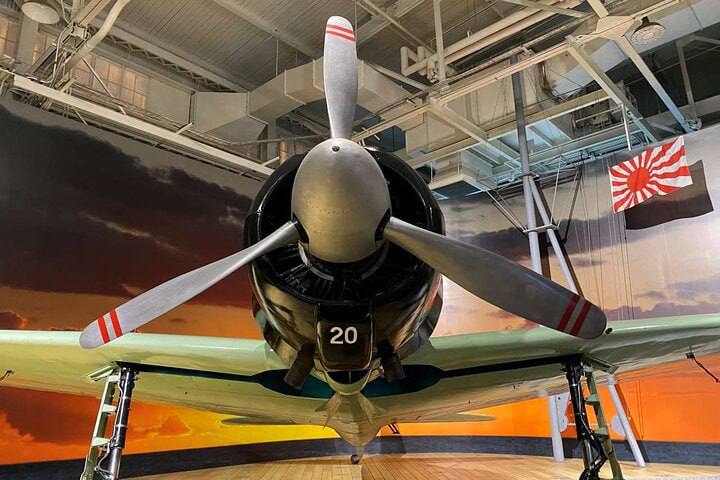Learn About Oahu
Learn About Oahu
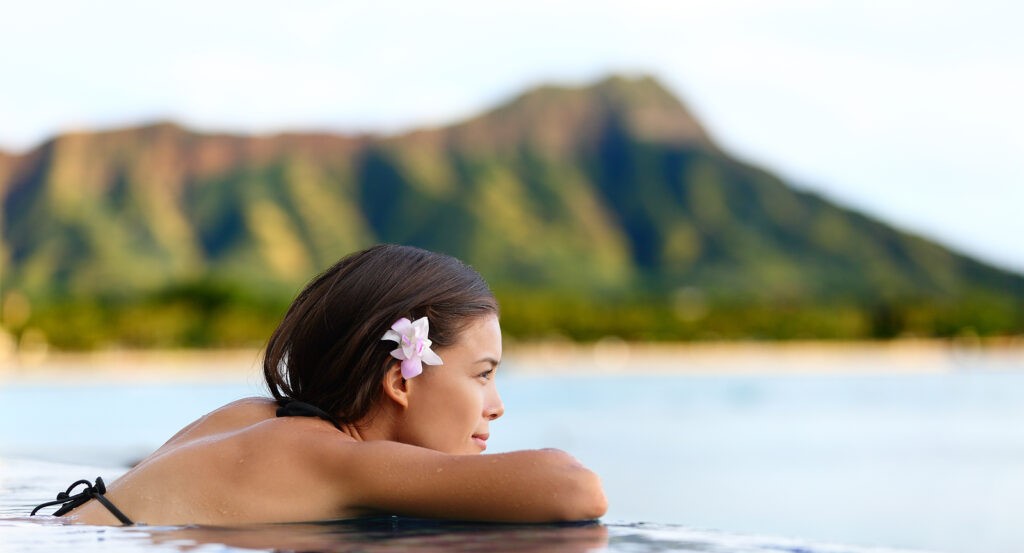
Infinity pool resort woman relaxing at sunset overlooking Waikiki beach in Honolulu city, Oahu island, Hawaii, USA. Wellness and relaxation concept for summer vacations.
captivating islands in the Hawaiian archipelago. It is a place where past and present converge seamlessly, creating a dynamic yet tranquil environment that has drawn travelers and settlers for centuries. From its towering volcanic ridges and lush rainforests to its golden beaches and turquoise waters, Oahu embodies the spirit of aloha, welcoming visitors into its embrace while offering a profound sense of connection to nature and humanity.
At the heart of Hawaii , Oahu is home to Honolulu, the state’s bustling capital, as well as historic Pearl Harbor and the iconic Waikiki Beach. This island is the cultural, political, and economic hub of Hawaii, blending the energy of a modern metropolis with the laid-back charm of island life. Yet, what sets Oahu apart is its unparalleled diversity. Its neighborhoods range from urban centers with towering skyscrapers to quiet coastal villages where life moves at a gentler pace. Each corner of the island tells its own story, shaped by centuries of change and adaptation.
The name “Oahu” itself holds an air of mystery. While its exact meaning is debated, some believe it translates to “the gathering place,” an apt description for an island that has historically been a crossroads of cultures. Polynesian settlers first arrived on its shores more than a millennium ago, navigating vast distances across the ocean. They brought with them plants, animals, and traditions that would become the foundation of Hawaiian society. Over time, Oahu became a center of trade, exploration, and cultural exchange, attracting people from around the globe. Today, it stands as a symbol of resilience and unity, where diverse traditions coexist and thrive.
Oahu’s geography is as diverse as its people. The island was formed by two ancient shield volcanoes, Wai‘anae and Ko‘olau, which have long since eroded into dramatic ridges and valleys. Between these mountain ranges lies the fertile Central Oahu Valley, once the agricultural heart of the island and now a mix of suburban developments and preserved lands. Along its coasts, visitors encounter a variety of landscapes: the dramatic cliffs of the Windward Coast, the serene beaches of the North Shore, and the sun-drenched shores of the Leeward Coast. Each region offers its own unique slice of paradise, inviting exploration and discovery.
Water is integral to Oahu’s identity. The surrounding Pacific Ocean has shaped the island’s culture, economy, and recreational activities. It is the birthplace of surfing, an ancient Polynesian practice that has evolved into a global phenomenon. On Oahu’s North Shore, massive winter waves challenge the world’s best surfers, while Waikiki’s gentle swells offer the perfect conditions for beginners. The ocean also sustains the island’s fishing traditions, connecting its residents to the rhythms of nature.
Oahu’s natural beauty extends beyond its beaches. Its rainforests, waterfalls , and volcanic craters provide a striking contrast to the urban landscapes of Honolulu. Hiking trails weave through these lush terrains, offering panoramic views of the island and its surrounding waters. Diamond Head, one of Hawaii’s most recognizable landmarks, stands as a sentinel over Waikiki, its summit accessible by a trail that rewards hikers with sweeping vistas. The island’s biodiversity is equally remarkable, from the vibrant coral reefs teeming with marine life to the native flora and fauna that thrive in its protected areas.
Yet, Oahu’s allure goes far deeper than its physical beauty. It is a living repository of history and culture, a place where ancient traditions meet contemporary influences. The island is dotted with sacred sites and historical landmarks, each bearing witness to pivotal moments in Hawaii’s past. From the sacred grounds of Pu‘u o Mahuka Heiau to the stately halls of Iolani Palace , Oahu offers a journey through time that reveals the resilience and creativity of its people.
Oahu has always been a place of innovation and adaptation. Its history is marked by waves of change, from the arrival of Polynesian voyagers to the influence of European explorers and the transformative events of the modern era. The island has been shaped by kings and queens, missionaries and merchants, soldiers and surfers. It has witnessed the rise and fall of the Hawaiian monarchy, the tragedy of Pearl Harbor, and the evolution of a global tourism industry. Through it all, Oahu has retained its unique identity, balancing growth with a deep respect for its cultural and natural heritage.
The people of Oahu are as dynamic as the island itself. Native Hawaiians, whose ancestors first settled here, continue to honor their traditions while navigating the complexities of modern life. Alongside them are residents whose roots trace back to Asia, Europe, and beyond, creating a rich tapestry of cultures. This diversity is evident in the island’s food, language, and celebrations. Whether savoring a plate of laulau and poi, enjoying a bowl of saimin, or participating in a vibrant hula performance, one can feel the interconnectedness of the island’s many influences.
Oahu’s neighborhoods reflect this diversity and depth. Honolulu’s bustling streets are lined with high-rise buildings, luxury boutiques, and historic sites. Waikiki, once a retreat for Hawaiian royalty, is now a vibrant hub for tourists from around the world. The North Shore offers a more laid-back vibe, where life revolves around the rhythm of the waves. On the Windward Coast, lush landscapes and quiet beaches provide a serene escape, while the Leeward Coast boasts sunny weather and a slower pace of life. In each area, the spirit of aloha is palpable, inviting visitors to embrace the island’s essence.
As the gateway to Hawaii, Oahu is often the first stop for travelers seeking to experience the islands’ magic. Yet, it is much more than a stepping stone; it is a destination that leaves an indelible mark on all who visit. Its vibrant culture, stunning scenery, and welcoming spirit create an atmosphere of enchantment and inspiration. Oahu’s story is one of connection—to the land, to the sea, and to one another. It is a place where memories are made, where history comes alive, and where the beauty of Hawaii is celebrated in all its forms. In Oahu, the journey is as rewarding as the destination, inviting all who arrive to become part of its ever-evolving narrative.ahu
History of the Island of Oahu
The Island of Oahu, often referred to as "The Gathering Place," is steeped in history that spans centuries. Its story is one of resilience, adaptation, and transformation, shaped by natural forces and human endeavor. From its volcanic origins to its role as the heart of modern Hawaii, Oahu's history is a tapestry of cultural richness and historical significance.
Volcanic Origins
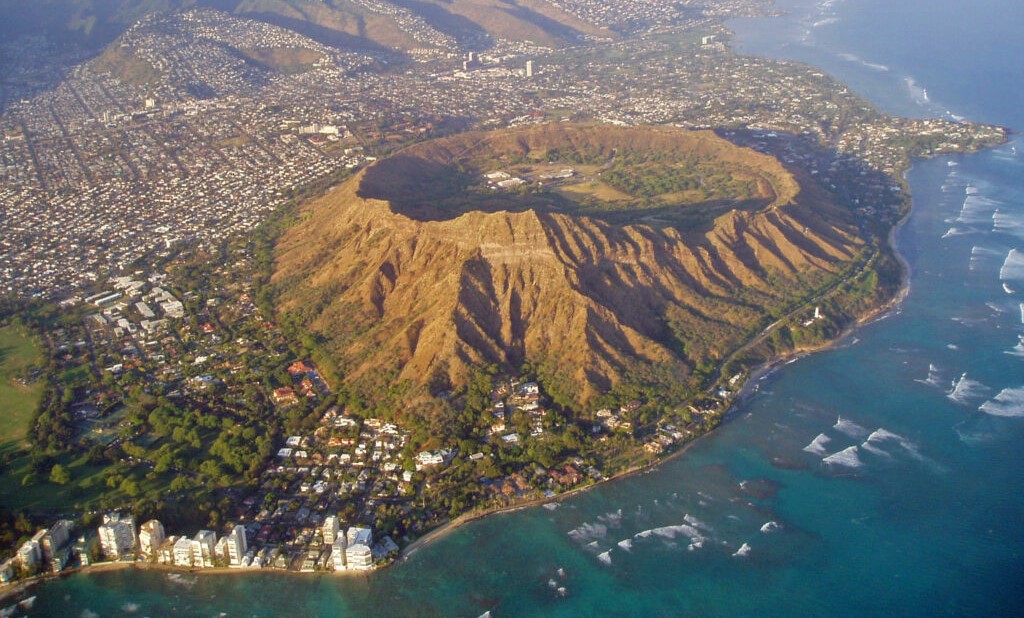
Aerial shot of Diamond Head taken from a plane.
Oahu’s geological history began millions of years ago when two shield volcanoes, Wai‘anae and Ko‘olau, erupted from the ocean floor. These massive volcanoes eventually formed the island, their lava flows creating the rugged mountains and fertile valleys that define Oahu’s landscape. Over time, erosion shaped the dramatic cliffs and lush terrain that make the island so visually striking. Between the two mountain ranges lies the Central Oahu Valley, a fertile plain that has supported agriculture and human settlement for centuries.
The volcanic activity that gave birth to Oahu also created unique geological formations, such as Diamond Head (Lēʻaʻi) and Hanauma Bay. These landmarks, along with the coral reefs that fringe the island’s shores, have played a vital role in the natural and cultural history of Oahu
Early Polynesian Settlement
The first human inhabitants of Oahu arrived more than 1,500 years ago, part of the great Polynesian migration that spread across the Pacific Ocean. These voyagers navigated vast distances using only the stars, ocean currents, and other natural cues. They brought with them plants like taro and sweet potatoes, animals such as pigs and chickens, and a wealth of cultural traditions that would form the foundation of Hawaiian society.
The early Polynesians established thriving communities on Oahu, relying on the island’s natural resources to sustain their way of life. They developed sophisticated agricultural systems, including lo‘i (irrigated taro fields) and loko i‘a (fishponds), which exemplified their understanding of sustainability and environmental management. These systems allowed them to cultivate food in abundance, ensuring the prosperity of their communities.
Oahu was divided into ahupua‘a, wedge-shaped land divisions that extended from the mountains to the sea. Each ahupua‘a provided access to a variety of resources, from fresh water and fertile land to fish and other marine life. The system promoted a sense of communal responsibility and respect for the land, principles that remain central to Hawaiian culture today.
Hawaiian society was structured around a hierarchy led by ali‘i (chiefs), who governed the land and its people. Spirituality was deeply ingrained in daily life, with ceremonies and rituals performed to honor the gods and ensure the harmony of nature and society. Heiau (temples) were built as sacred spaces for worship and offerings, reflecting the profound connection between the Hawaiian people and their environment.
The Rise of the Hawaiian Kingdom
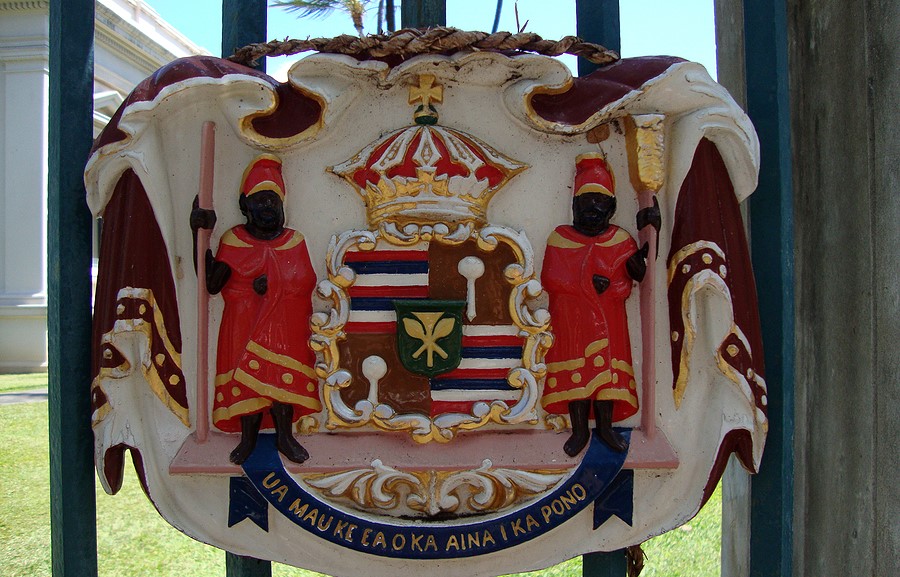
Historic Royal Seal at Iolani Palace one of 16 Bronze Coat of Arms of the government of Hawaii with the state motto: {`"`}Ua Mau Ke Ea o Ka Aina I Ka Pono{`"`} (The life of the land is perpetuated in righteousness).
By the 18th century, Oahu was one of several independent chiefdoms in the Hawaiian Islands. Its fertile lands and strategic location made it a coveted prize in the struggle for power among the islands' chiefs. This era of competition and conflict culminated in the unification of the Hawaiian Islands under King Kamehameha I.
In 1795, Kamehameha launched a military campaign to conquer Oahu. The decisive Battle of Nu‘uanu took place on the cliffs of Nu‘uanu Pali, where Kamehameha’s forces defeated Oahu’s defenders, driving them over the steep precipice. This victory secured Oahu as part of Kamehameha’s kingdom and marked a turning point in Hawaiian history. By 1810, Kamehameha had unified all the islands, establishing the Hawaiian Kingdom.
Oahu’s importance grew under Kamehameha’s rule. Honolulu, with its deep natural harbor, became the political and economic center of the kingdom. The harbor attracted traders, whalers, and missionaries, bringing new goods and ideas to the islands. This period of contact with the outside world laid the groundwork for significant changes in Hawaiian society.
Western Contact and Missionary Influence
The arrival of Western explorers in the late 18th century marked a new chapter in Oahu’s history. Captain James Cook’s visit to the Hawaiian Islands in 1778 introduced Hawaiians to European technology and customs. In the decades that followed, Oahu became a hub for trade and commerce, attracting ships from Europe, America, and Asia.
In 1820, the first Christian missionaries arrived in Hawaii with the goal of converting the native population to Christianity. Their influence was profound, leading to significant cultural and social changes. The missionaries introduced a written Hawaiian language, established schools, and spread literacy among the population. By the mid-19th century, Hawaii had one of the highest literacy rates in the world.
However, the missionaries’ arrival also disrupted traditional Hawaiian practices. Cultural expressions such as hula and certain religious rituals were discouraged, as they were deemed incompatible with Christian values. The introduction of Western diseases, including smallpox and measles, devastated the native Hawaiian population, which had no immunity to these illnesses. Within a century, the population declined dramatically, altering the social and cultural fabric of the islands.
Economic Transformation: The Plantation Era
The 19th century saw Oahu undergo an economic transformation with the rise of plantation agriculture. Sugarcane and pineapple became the island’s primary crops, driving economic growth and reshaping its landscape. Large plantations required substantial labor forces, prompting the importation of workers from China, Japan, Portugal, the Philippines, and other countries.
This influx of immigrant laborers contributed to Oahu’s multicultural identity, as workers brought their own customs, languages, and cuisines. Today, the island’s diverse cultural heritage is a testament to the enduring legacy of these immigrant communities.
The plantation era also spurred infrastructure development on Oahu. Railroads, ports, and irrigation systems were constructed to support the agricultural industry, while Honolulu grew into a bustling urban center. The economic prosperity generated by the plantations funded the construction of opulent homes, government buildings, and public spaces, further transforming the island.
The Overthrow of the Hawaiian Monarchy
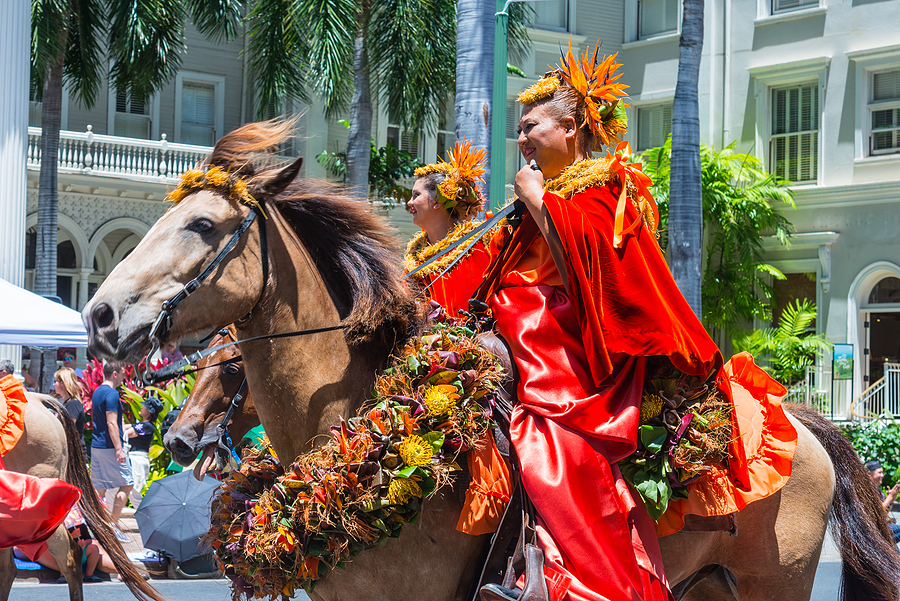
HONOLULU, HAWAII - The 100th Annual King Kamehameha Day Parade during the final stretch along the famed Kalakaua Avenue in Waikiki Beach.
The late 19th century was a period of political turmoil for Hawaii, culminating in the overthrow of the Hawaiian monarchy. Queen Lili'uokalani, who ascended to the throne in 1891, sought to restore power to the monarchy and resist the growing influence of foreign business interests. Her efforts were met with opposition from a coalition of American and European settlers who sought to establish a republic that would facilitate Hawaii's annexation by the United States.
In 1893, a coup d’état orchestrated by these settlers, with the backing of U.S. military forces, led to the overthrow of the monarchy. Queen Lili‘uokalani was placed under house arrest, and a provisional government was established. Despite her protests and appeals to the U.S. government, Hawaii was annexed in 1898, becoming a U.S. territory. This marked the end of the Hawaiian Kingdom and the beginning of a new chapter in Oahu’s history.
World War II and the Attack on Pearl Harbor

USS Arizona Memorial in Pearl Harbor in Honolulu, Hawaii. Resting place of 1,102 sailors killed during the attack on Pearl Harbor.
Oahu's strategic location in the Pacific made it a focal point during World War II. On December 7, 1941, the Japanese attack onPearl Harbor brought the United States into the war. The attack, which claimed the lives of over 2,400 Americans and caused extensive damage to naval and air forces, marked a turning point in global history.
Pearl Harbor, located on Oahu’s southern coast, became a symbol of American resilience and determination. Today, the events of that day are commemorated at the USS Arizona Memorial and other historical landmarks, which serve as reminders of the sacrifices made during the war.
During the war, Oahu became a critical military hub, with thousands of troops stationed on the island. The influx of military personnel brought economic growth and spurred infrastructure development, but it also placed strains on local resources. After the war, Oahu continued to serve as a vital military and economic center, shaping its modern identity.
Statehood and Modern Oahu
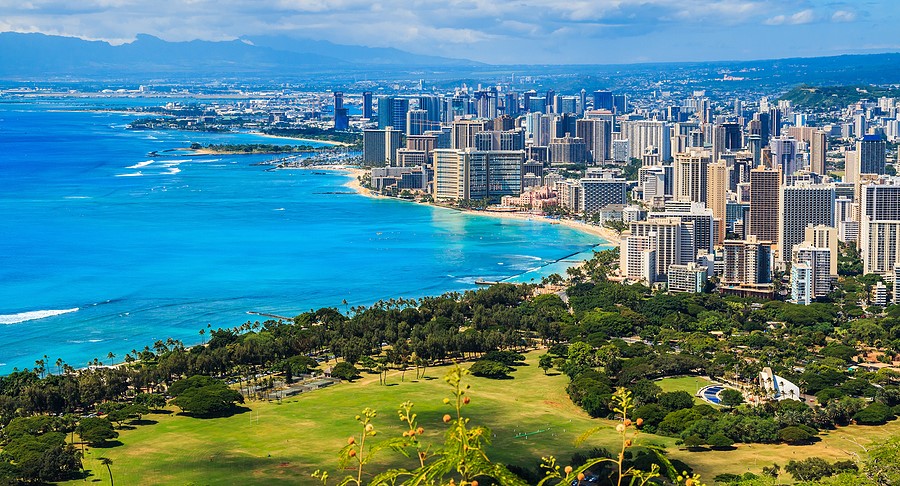
Honolulu Hawaii Skyline of Honolulu Hawaii and the surrounding area including the hotels and buildings on Waikiki Beach.
Hawaii achieved statehood in 1959, becoming the 50th state of the United States. Oahu, as the political and economic heart of Hawaii, experienced significant growth during this period. Tourism emerged as a major industry, driven by the island’s natural beauty, cultural attractions, and accessibility. Iconic destinations such as Waikiki Beach, Diamond Head, and the North Shore became world-renowned, drawing millions of visitors annually.
Today, Oahu is a dynamic blend of past and present, where ancient traditions coexist with modern innovations. Its history is preserved in its landmarks, museums, and cultural practices, ensuring that the legacy of its people endures for future generations. From its volcanic origins to its pivotal role in global events, Oahu remains a testament to the resilience and adaptability of its people.
Famous People from the Island of Oahu
Oahu, often referred to as “The Gathering Place,” is not only the heart of Hawaii but also a birthplace and home to many individuals who have made significant contributions in various fields. These famous figures, from historical monarchs to modern icons, embody the spirit and cultural richness of the island. Their stories reflect the resilience, creativity, and aloha spirit that define Oahu and its people.
King Kamehameha I
King Kamehameha I, also known as Kamehameha the Great, is one of the most celebrated figures in Hawaiian history. Though born on the Big Island of Hawaii, his influence on Oahu is profound. He unified the Hawaiian Islands into a single kingdom in the early 19th century, a feat that included the decisive Battle of Nu‘uanu on Oahu. Kamehameha’s victory in this battle, fought on the dramatic cliffs of Nu‘uanu Pali, marked the beginning of a united Hawaiian Kingdom. Under his rule, Oahu became the political and economic center of the islands, with Honolulu as its capital. His leadership brought stability and prosperity, and his legacy is commemorated annually on King Kamehameha Day.
Queen Lili'uokalani
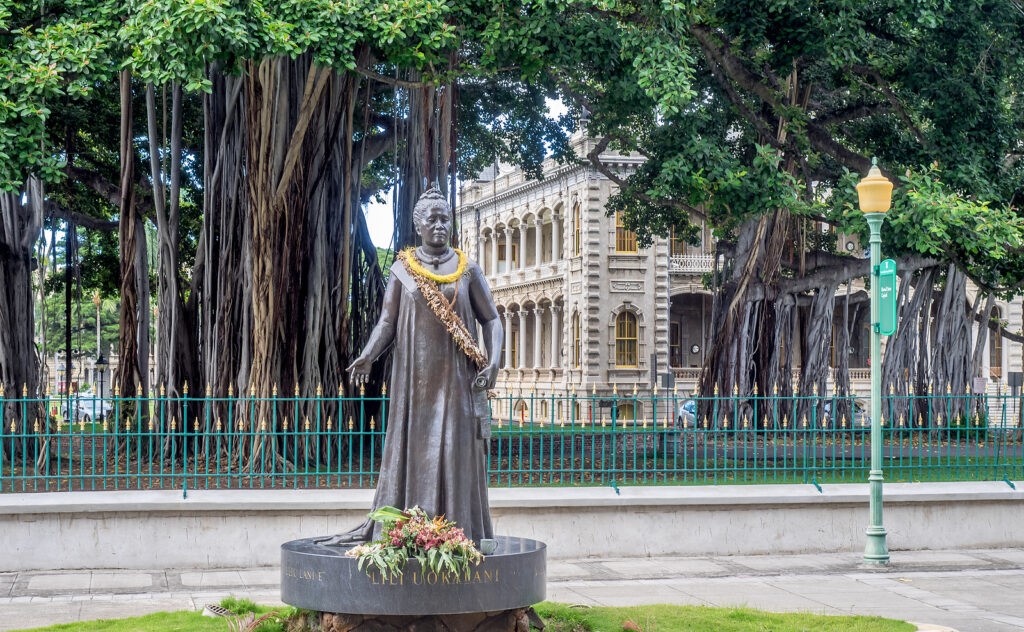
HONOLULU, HI - Queen Lili{`'`}uokalani Statue outside of the Hawaii State Capitol Building in Honolulu, Hawaii Queen Liliuokalani was the last monarch of the Hawaiian Islands.
Queen Lili‘uokalani, the last reigning monarch of Hawaii, was deeply connected to Oahu. Born in 1838, she was educated at the Royal School in Honolulu and grew up in a time of profound change for Hawaii. Her reign was marked by efforts to preserve Hawaiian sovereignty and culture in the face of increasing foreign influence. She is perhaps best remembered for her musical contributions, including the iconic song “Aloha ‘Oe,” which has become a symbol of Hawaiian resilience and aloha spirit. Despite being overthrown in 1893 and placed under house arrest at her residence in Washington Place, Lili‘uokalani remained an advocate for her people and a symbol of grace and strength.
Duke Kahanamoku
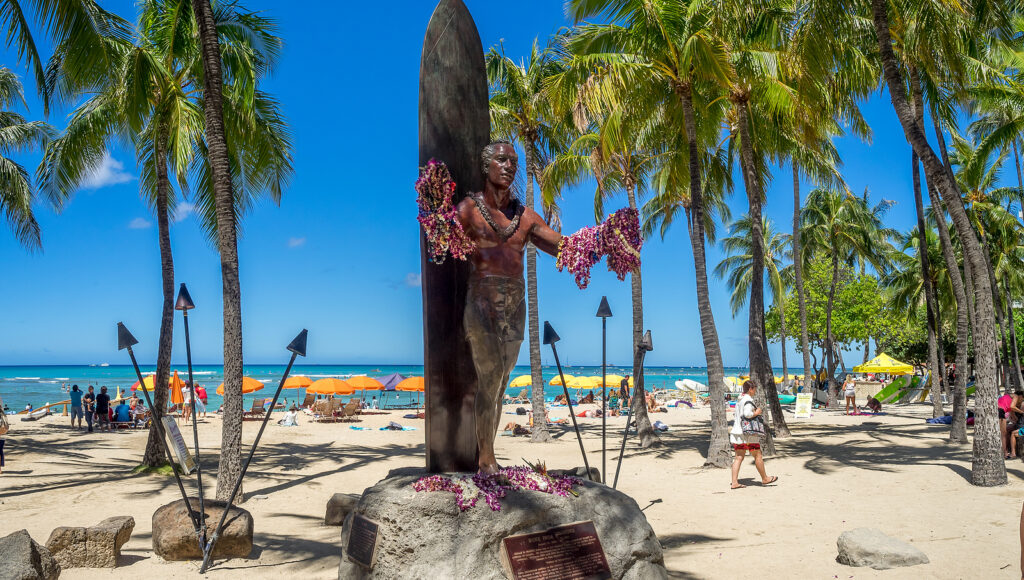
Duke Kahanamoku Statue on Waikiki Beach in Honolulu. Duke famously popularized surfing and won gold medals for the USA in swimming.
Known as the “Father of Modern Surfing,” Duke Kahanamoku is a legendary figure who brought global attention to Hawaii’s surfing tradition. Born in 1890 in Honolulu, Duke excelled as a swimmer and became an Olympic gold medalist, representing the United States in the 1912, 1920, and 1924 Olympics. Beyond his athletic achievements, Duke introduced surfing to the world, performing demonstrations in Australia, California, and beyond. His charisma and embodiment of the aloha spirit made him an international icon and cultural ambassador for Hawaii. Today, the Duke Kahanamoku statue on Waikiki Beach stands as a tribute to his enduring legacy.
Barack Obama
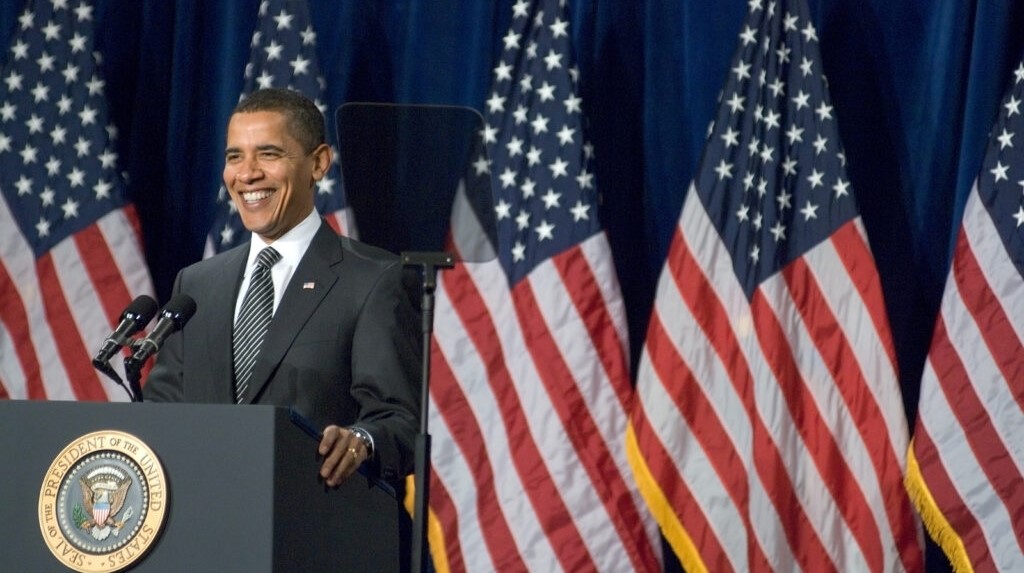
President Barack Obama smiles at the crowd before speaking about the home mortgage crisis at Dobson High School
Barack Obama, the 44th President of the United States, was born on August 4, 1961, in Honolulu, Oahu. His formative years on the island played a crucial role in shaping his worldview and leadership style. Obama attended Punahou School, one of Hawaii’s most prestigious institutions, where he excelled academically and developed a deep appreciation for Hawaii’s multicultural heritage. The values of inclusivity and community, which he attributes to his Hawaiian upbringing, were central to his presidency. Even as a global leader, Obama has maintained close ties to Oahu, often returning to the island for family vacations and to reconnect with the place he calls home.
Israel Kamakawiwo‘ole
Affectionately known as “Bruddah Iz,” Israel Kamakawiwo‘ole is one of Hawaii’s most beloved musicians. Born in 1959 in Honolulu, Iz grew up immersed in the music and traditions of his Native Hawaiian heritage. As a member of the Makaha Sons of Ni‘ihau, he gained recognition for his soulful voice and commitment to preserving Hawaiian music. His solo career brought international acclaim, particularly with his medley of “Somewhere Over the Rainbow/What a Wonderful World.” This song has become an anthem of hope and aloha, resonating with audiences worldwide. Despite his untimely passing in 1997, Iz’s music continues to inspire and connect people to Hawaii’s culture.
Bruno Mars

Bruno Mars at the 54th Annual Grammy Awards, Staples Center, Los Angeles, CA
Bruno Mars, born Peter Gene Hernandez in 1985 in Honolulu, is a global pop sensation with deep roots in Oahu. Raised in a musical family, Mars began performing at a young age, showcasing his talents as a singer, songwriter, and multi-instrumentalist. His unique blend of pop, funk, soul, and reggae has earned him numerous accolades, including multiple Grammy Awards. Songs like “Just the Way You Are,” “Uptown Funk,” and “24K Magic” have solidified his status as one of the world’s most influential artists. Despite his international fame, Mars often credits his Hawaiian upbringing for his work ethic and love of music.
Patsy Mink
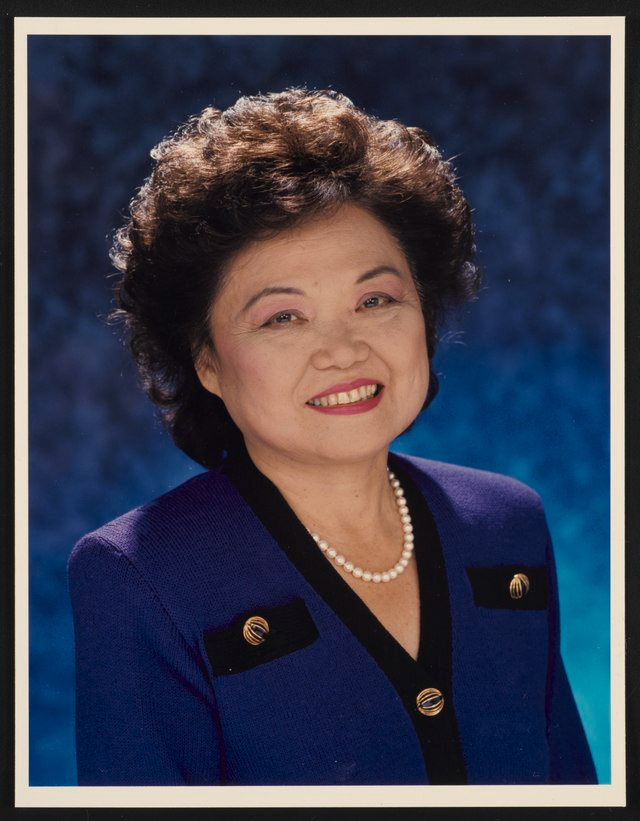
Photograph shows official House of Representatives portrait of Congresswoman Mink, the first woman of color elected to Congress.
Patsy Takemoto Mink, born in 1927 in Paia, Maui, and raised in Honolulu, was a trailblazing politician and advocate for gender equality. She was the first woman of color elected to the United States Congress and played a pivotal role in the passage of Title IX, which prohibits gender discrimination in education. Mink’s work has had a lasting impact on American society, ensuring greater opportunities for women and girls in sports and academics. Her legacy is honored through the Patsy T. Mink Equal Opportunity in Education Act and numerous initiatives aimed at promoting equality and justice.
Don Ho
Don Ho, a legendary entertainer and cultural icon, was born in 1930 in Honolulu. Known for his smooth voice and charismatic performances, Ho became synonymous with Hawaiian music during the 1960s and 1970s. His signature song, “Tiny Bubbles,” captured the laid-back charm of island life and earned him international fame. Ho performed regularly in Waikiki, drawing audiences from around the world and helping to popularize Hawaiian music and culture. His influence extended beyond music, as he became a symbol of Hawaii’s unique spirit and hospitality.
Bette Midler
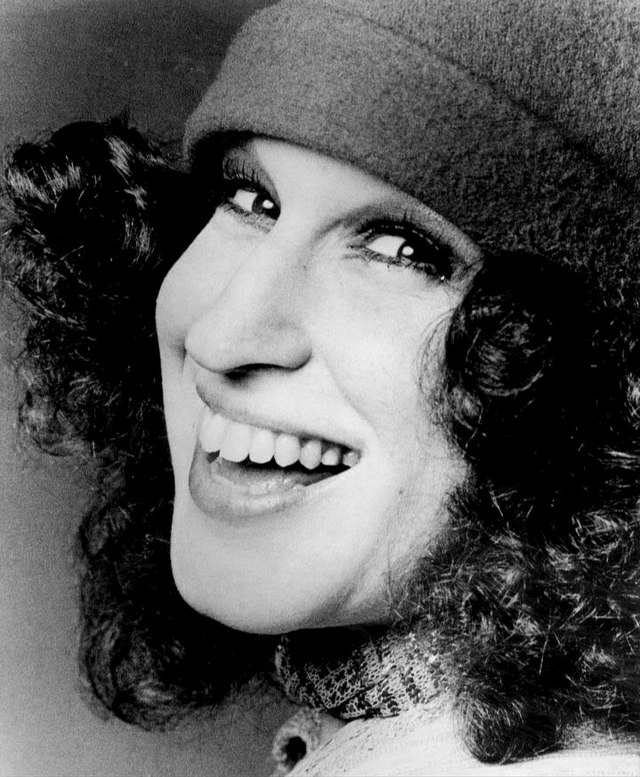
Bette Midler, was born in Honolulu in 1945.
Bette Midler, affectionately known as “The Divine Miss M,” was born in Honolulu in 1945. A versatile actress, singer, and comedian, Midler has enjoyed a career spanning decades and multiple mediums. From her iconic roles in films like Beaches and Hocus Pocus to her Grammy-winning music career, Midler has left an indelible mark on the entertainment industry. Her Hawaiian upbringing influenced her vibrant personality and commitment to environmental advocacy, particularly her work to preserve and protect the islands’ natural beauty.
Ellison Onizuka
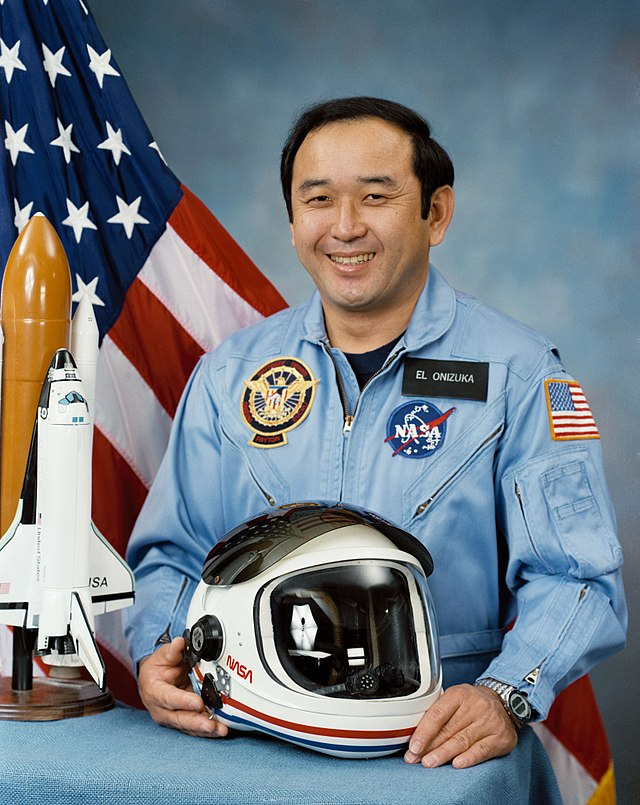
Ellison Shoji Onizuka born in 1946 on the Big Island
Hanauma Bay is a protected marine conservation area located on the southeastern coast of Oahu. This volcanic bay, formed thousands of years ago, is one of the island's premier snorkeling destinations. Its vibrant coral reefs and abundant marine life, including colorful fish and sea turtles, make it a favorite spot for underwater exploration.
Daniel K. Inouye
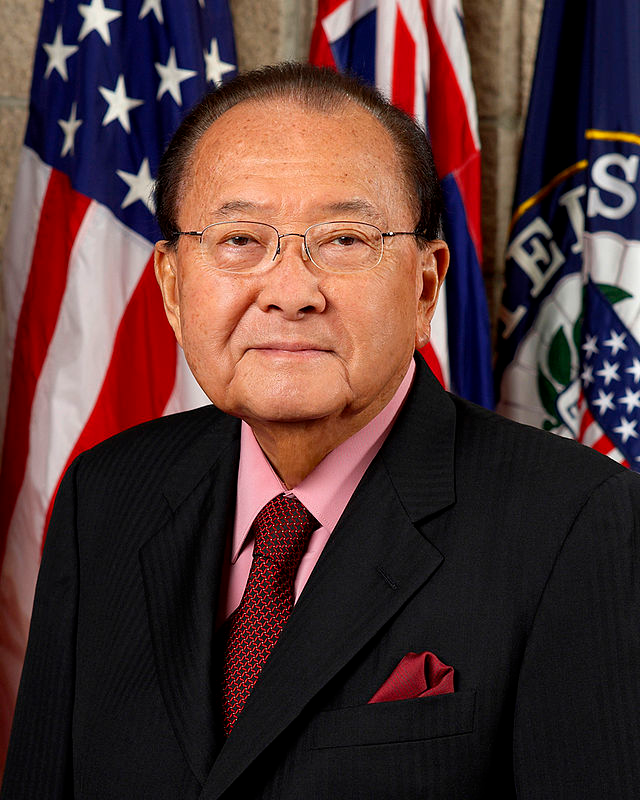
Daniel K. Inouye
Daniel K. Inouye, born in Honolulu in 1924, was a decorated World War II veteran and a long-serving U.S. Senator from Hawaii. As a member of the 442nd Regimental Combat Team, an all-Japanese American unit, Inouye demonstrated extraordinary bravery in battle, earning the Medal of Honor. His political career spanned over five decades, during which he championed civil rights, veterans’ issues, and Hawaiian statehood. The Daniel K. Inouye International Airport in Honolulu is named in his honor, recognizing his contributions to Hawaii and the nation.
Eddie Aikau
Eddie Aikau, born in 1946 in Maui but closely associated with Oahu, was a legendary big-wave surfer and lifeguard. As the first lifeguard at Waimea Bay on the North Shore, Aikau saved countless lives and became a symbol of courage and selflessness. He was also a crew member on the Polynesian voyaging canoe Hōkūle‘a and gave his life attempting to rescue his crewmates during a perilous journey. The phrase “Eddie Would Go” has become a mantra of bravery and determination, honoring his legacy.
Oahu’s contribution to the world through its famous figures is a testament to the island’s rich cultural heritage and the unique spirit of its people. From royalty to modern icons, these individuals have carried the aloha spirit far beyond the shores of Hawaii, leaving an indelible mark on history and culture
Today, it serves as a popular hiking destination. The Diamond Head Summit Trail takes visitors to the top, offering panoramic views of Waikiki, the Pacific Ocean, and the southern coastline of Oahu. Once a strategic military lookout, remnants of bunkers and a fire control station are visible along the trail, adding historical depth to the natural allure of this site.
Famous Landmarks and Beaches on the Island of Oahu
The Island of Oahu, known as “The Gathering Place,” is home to some of the most iconic landmarks and stunning beaches in the world. These sites embody the island’s unique blend of natural beauty, historical significance, and cultural richness. From majestic volcanic craters and sacred valleys to golden shores kissed by turquoise waves, Oahu’s landmarks and beaches offer a glimpse into the island’s heart and soul.
Famous Landmarks on Oahu
Diamond Head (Lēʻaʻi)
Diamond Head, or Lēʻaʻi in Hawaiian, is perhaps the most recognizable landmark on Oahu. This volcanic tuff cone, located at the eastern edge of Waikiki, is an enduring symbol of Hawaii’s natural beauty. Formed around 300,000 years ago during a single explosive eruption, Diamond Head rises prominently above the Honolulu skyline.
Today, it serves as a popular hiking destination. The Diamond Head Summit Trail takes visitors to the top, offering panoramic views of Waikiki, the Pacific Ocean, and the southern coastline of Oahu. Once a strategic military lookout, remnants of bunkers and a fire control station are visible along the trail, adding historical depth to the natural allure of this site.
Pearl Harbor National Memorial
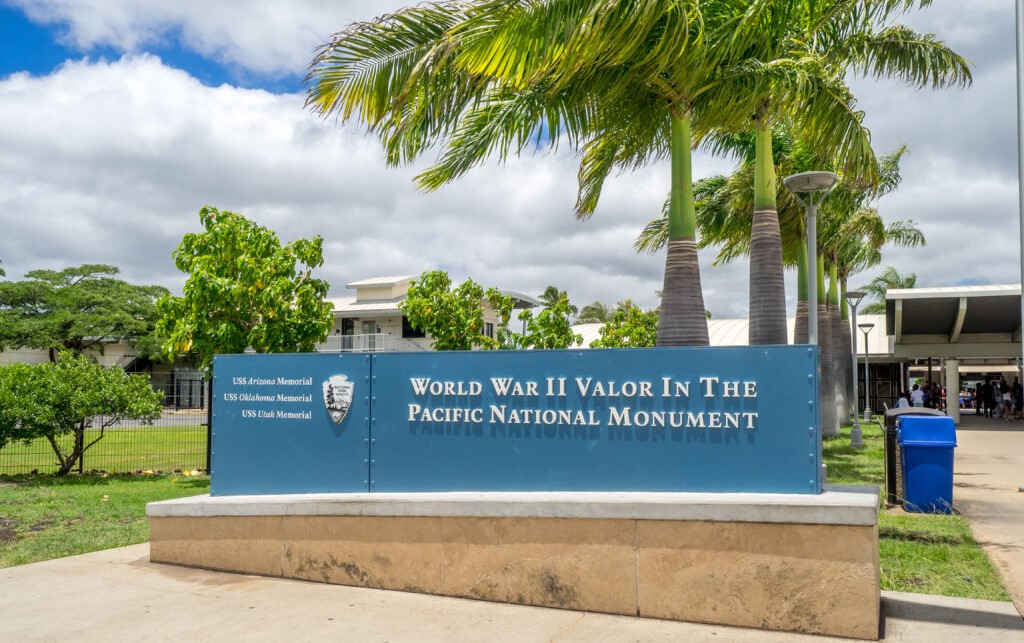
World War II Valor in the Pacific National Monument in Pearl Harbor, USA. The Monument includes the Pearl Harbor Visitor Centre and the USS Arizona Memorial.
Pearl Harbor, situated on Oahu’s southern coast, holds a profound place in both Hawaiian and American history. The site of the infamous attack on December 7, 1941, which propelled the United States into World War II, Pearl Harbor is now a National Historic Landmark.
The USS Arizona Memorial, which sits above the sunken battleship, honors the 1,177 crewmen who lost their lives during the attack. Visitors can also explore the Battleship Missouri, where the Japanese surrender was signed, and the Pearl Harbor Aviation Museum, which showcases aircraft and artifacts from the war. This poignant site draws millions annually, offering a space for reflection and education.
Iolani Palace
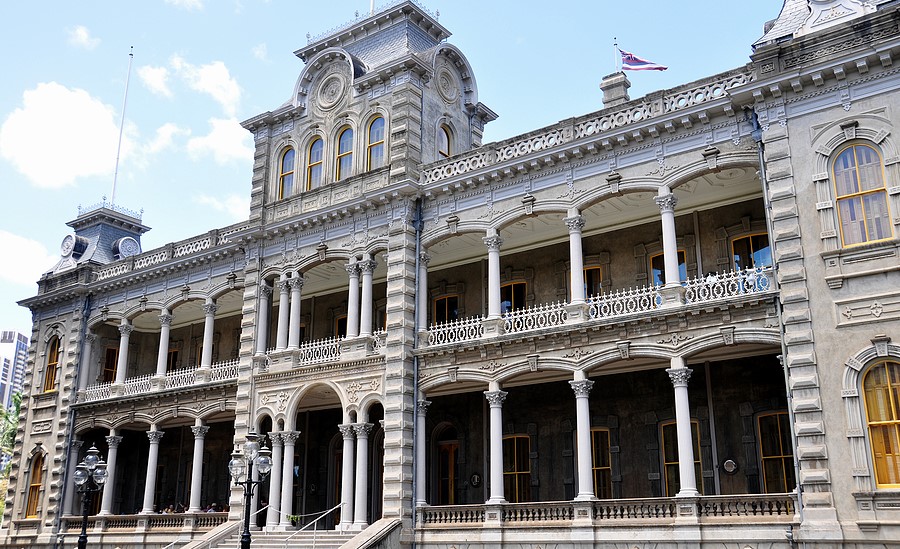
Iolani Palace in Honolulu, Hawaii
Iolani Palace, located in downtown Honolulu, is the only royal palace in the United States. Once the residence of Hawaii's monarchs, including King Kalākaua and Queen Lili'uokalani, the palace is a symbol of the Hawaiian Kingdom's grandeur and sovereignty.
Constructed in 1882, Iolani Palace was equipped with modern amenities such as electric lighting and indoor plumbing, making it a marvel of its time. Today, visitors can tour the palace’s opulent halls and learn about the history of Hawaii’s monarchy through guided tours and exhibits
Nu'uanu Pali Lookout
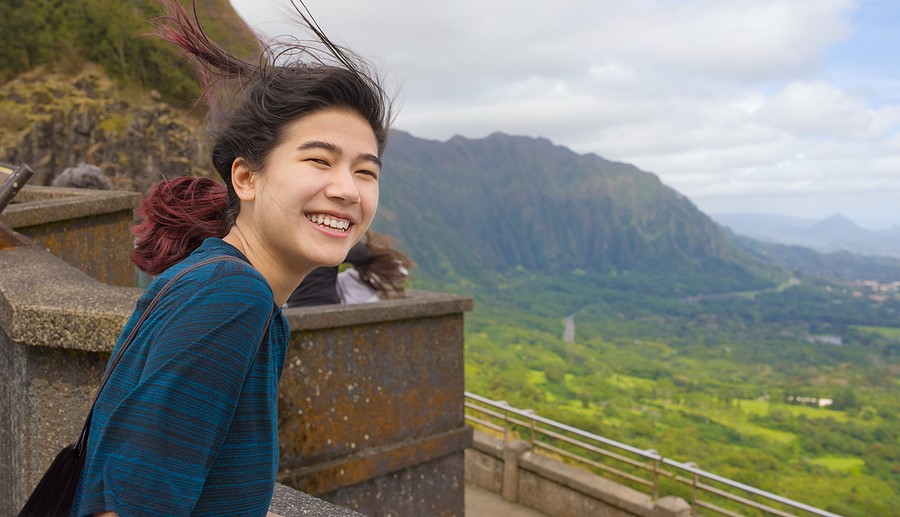
Pali lookout looking out towards the ocean and the city of Kaneohe, Oahu, Hawaii
Perched high in the Ko‘olau Mountains, the Nu‘uanu Pali Lookout offers breathtaking views of Oahu’s Windward Coast. This scenic viewpoint is also steeped in history. It was here, in 1795, that King Kamehameha I’s forces achieved a decisive victory during the Battle of Nu‘uanu, solidifying his unification of the Hawaiian Islands.
The winds at the Pali Lookout are famously strong, adding a sense of drama to the stunning vistas below. Visitors can see the lush valleys, jagged cliffs, and the turquoise waters of Kaneohe Bay, making it a must-visit destination for history buffs and nature lovers alike.
Hanauma Bay Nature Preserve
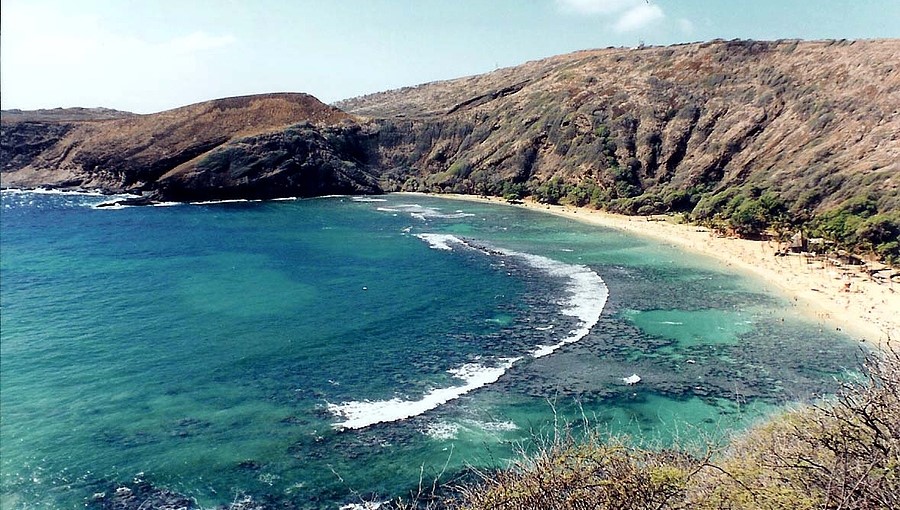
Hanama bay Hawaii
Hanauma Bay is a protected marine conservation area located on the southeastern coast of Oahu. This volcanic bay, formed thousands of years ago, is one of the island’s premier snorkeling destinations. Its vibrant coral reefs and abundant marine life, including colorful fish and sea turtles, make it a favorite spot for underwater exploration.
To preserve its delicate ecosystem, Hanauma Bay has implemented strict conservation measures, including visitor education programs and limited daily access. The bay’s visitor center provides insights into its geology, history, and marine biodiversity, ensuring a sustainable and enriching experience for all.
Byodo-In Temple

The Byodo-in temple on the island of Oahu Hawaii
Nestled in the Valley of the Temples on Oahu’s Windward Coast, the Byodo-In Temple is a stunning replica of a 950-year-old Buddhist temple in Uji, Japan. This non-denominational temple, built in 1968 to commemorate the centennial of Japanese immigration to Hawaii, is surrounded by lush gardens, koi ponds, and towering mountains.
The temple’s serene ambiance makes it a place for meditation, reflection, and cultural appreciation. Visitors can ring the sacred Bon-sho (bell) for good fortune and enjoy the tranquility of this sacred site.
Makapu‘u Lighthouse
Located on Oahu’s southeastern tip, the Makapu‘u Lighthouse is a historic beacon that has guided ships since its construction in 1909. The lighthouse, perched atop a cliff, offers spectacular views of the Pacific Ocean and the neighboring islands of Molokai and Lanai on clear days.
The Makapu‘u Point Lighthouse Trail is a popular hiking route, providing panoramic vistas of the coastline and opportunities for whale watching during the winter months. Its accessibility and scenic rewards make it a favorite among locals and visitors.
Polynesian Cultural Center
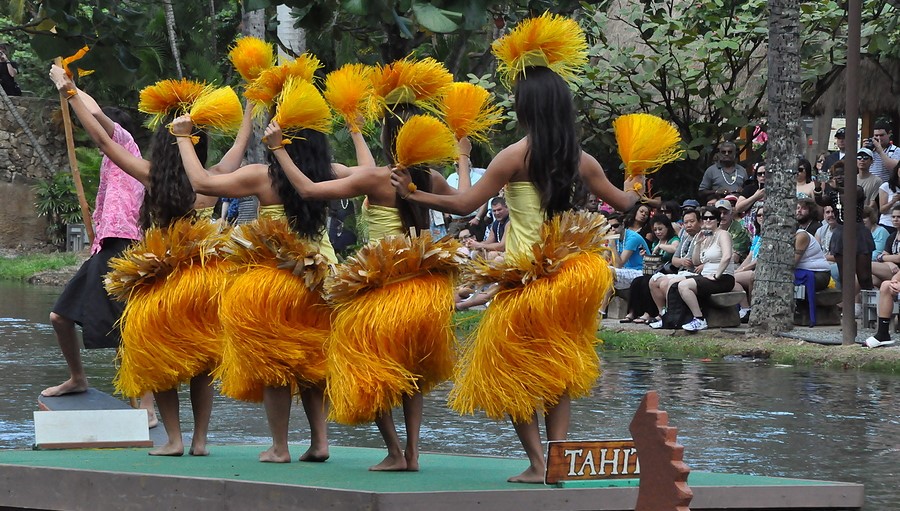
OAHU, HAWAII - Students perform traditional Tahitian dance at a canoe pageant at the Polynesian Cultural Center in Oahu, Hawaii
The Polynesian Cultural Center in Laie is a living museum that celebrates the cultures of Polynesia. Visitors can explore traditional villages representing Hawaii, Samoa, Tahiti, Fiji, Tonga, and Aotearoa (New Zealand), each offering interactive activities, performances, and demonstrations.
The center’s evening show, “Ha: Breath of Life,” is a spectacular production featuring music, dance, and fire-knife performances. The Polynesian Cultural Center provides an immersive experience that highlights the diversity and richness of Polynesian heritage.
Waikiki Beach
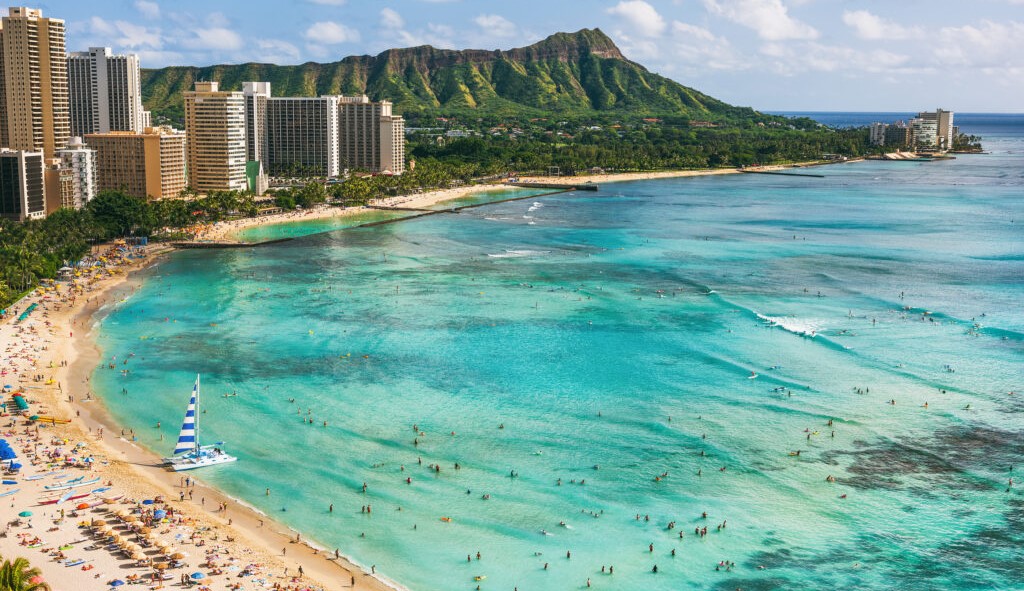
Hawaii beach Honolulu city travel landscape of Waikiki beach and Diamond Head mountain peak at sunset, Oahu island.
Waikiki Beach is synonymous with Oahu. This iconic stretch of sand, located in the heart of Honolulu, is a hub of activity, offering everything from surfing and paddleboarding to luxury shopping and fine dining. Once a retreat for Hawaiian royalty, Waikiki has become a global destination for travelers seeking sun, sea, and vibrant nightlife.
The beach’s gentle waves are perfect for beginners learning to surf, while its proximity to attractions like Diamond Head and Kapiolani Park makes it an ideal base for exploration. Despite its popularity, Waikiki retains a sense of aloha that keeps visitors coming back.
Lanikai Beach
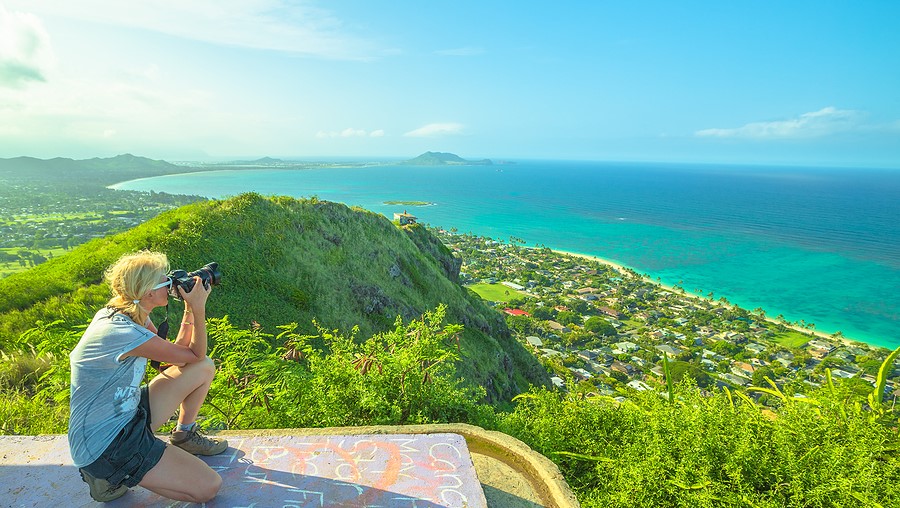
Lanikai Beach and Kailua Beach in Oahu East shore, Hawaii, USA.
Consistently ranked among the world’s most beautiful beaches, Lanikai Beach on Oahu’s Windward Coast is a slice of paradise. Its powdery white sand and calm, turquoise waters make it a favorite for swimming, kayaking, and paddleboarding. The nearby Mokulua Islands add to the picturesque scenery, and sunrise views from Lanikai are simply breathtaking. North Shore Beaches
Oahu’s North Shore is a mecca for surfers, offering some of the most famous surf breaks in the world. During the winter months, beaches like Banzai Pipeline, Sunset Beach, and Waimea Bay host prestigious surfing competitions, drawing athletes and spectators from around the globe.
In the summer, when the waves calm, these beaches become idyllic spots for snorkeling, swimming, and relaxation. The laid-back vibe of the North Shore and its local food trucks, serving dishes like garlic shrimp and poke, add to the region’s charm.The beach’s gentle waves are perfect for beginners learning to surf, while its proximity to attractions like Diamond Head and Kapiolani Park makes it an ideal base for exploration. Despite its popularity, Waikiki retains a sense of aloha that keeps visitors coming back.
Kailua Beach
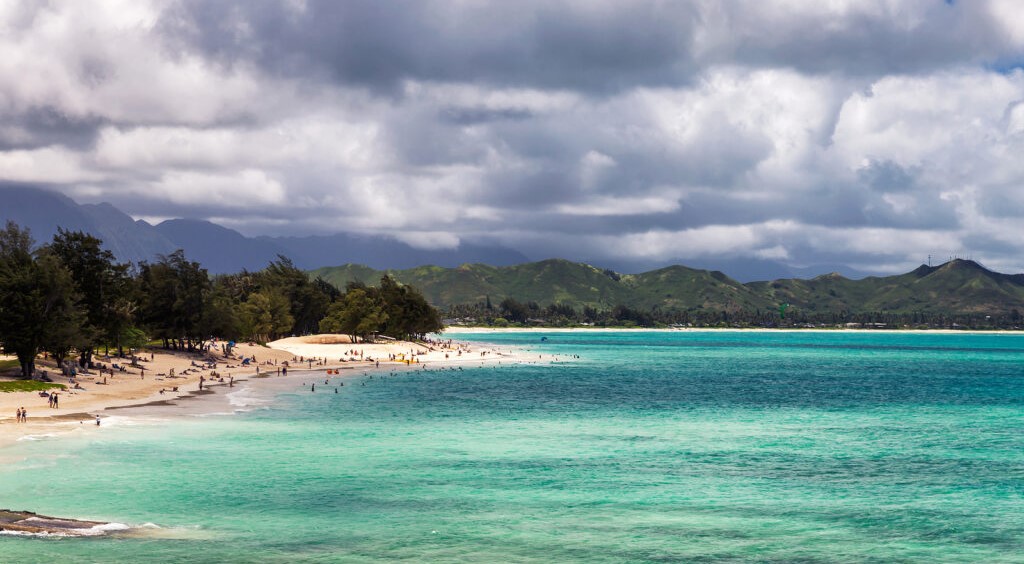
View of Kailua beach with lots of people sunbathing and swimming
Adjacent to Lanikai Beach, Kailua Beach is another gem on Oahu’s Windward Coast. Known for its soft sand and turquoise waters, Kailua Beach is ideal for families and water sports enthusiasts. Activities like kayaking, windsurfing, and stand-up paddleboarding are popular here, and the nearby town of Kailua offers a range of shops and eateries.
Waimanalo Beach
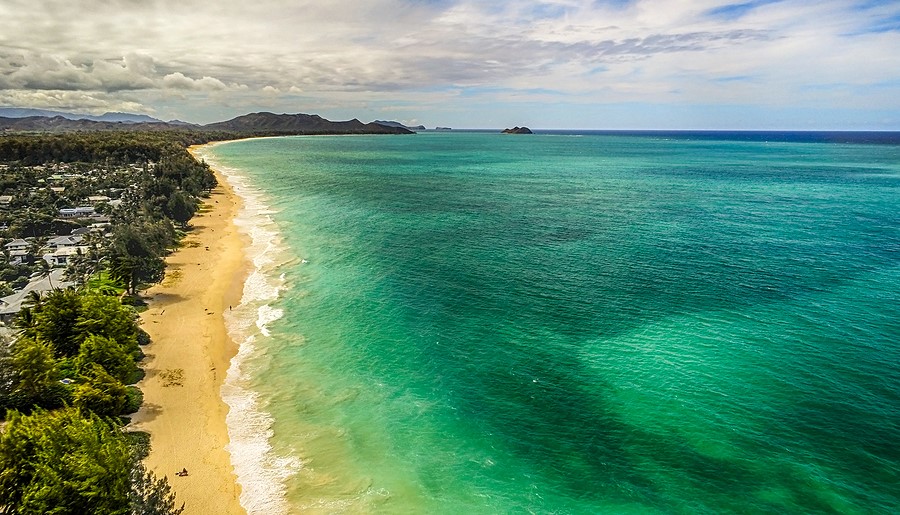
the waimanalo beach oahu hawaii vacation spot
Stretching for miles along Oahu’s eastern shore, Waimanalo Beach is known for its tranquil atmosphere and scenic beauty. The beach’s soft white sand and gentle waves make it perfect for swimming, picnicking, and long walks. Surrounded by ironwood trees and backed by the Ko‘olau Mountains, Waimanalo offers a serene escape from the crowds.
Makaha Beach

Aerial panorama of the west coast of Oahu with Makaha Valley and Papaoneone beach. Hawaii, USA
Located on Oahu’s Leeward Coast, Makaha Beach is a haven for surfers and snorkelers. Known for its crystal-clear waters and abundant marine life, Makaha offers excellent conditions for underwater exploration. During the winter, its waves attract skilled surfers, while the summer months provide calm seas for swimming and snorkeling.
Sandy Beach
Sandy Beach, situated on Oahu’s southeastern coast, is famous for its powerful shore break and stunning views. Popular among bodyboarders and experienced surfers, Sandy Beach’s waves can be challenging but exhilarating. The golden sands and rugged cliffs make it a favorite spot for photography and beachcombing.
Hale'iwa Beach Park
Hale‘iwa Beach Park on the North Shore combines the charm of a small-town beach with excellent recreational opportunities. Its calm waters are ideal for stand-up paddleboarding and swimming, while its shaded picnic areas make it a great spot for family outings. The nearby town of Hale‘iwa offers a glimpse of old Hawaii, with local shops, art galleries, and eateries. Oahu’s famous landmarks and beaches showcase the island’s incredible diversity, from its rich history and cultural heritage to its unparalleled natural beauty. Each site offers a unique experience, inviting visitors to explore, learn, and connect with the spirit of the island.
Small Group Pearl Harbor Memorial Tours From
Daniel K. Inouye International Airport
